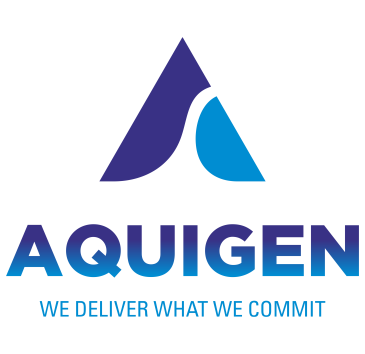N-Nitroso impurities, a class of potent mutagenic and carcinogenic compounds, have emerged as a significant concern in the pharmaceutical industry. These impurities can form during the manufacturing process of active pharmaceutical ingredients (APIs) and drug products, posing severe health risks to patients. As regulatory bodies tighten their guidelines and enforcement measures, pharmaceutical companies are under increasing pressure to mitigate the risks associated with N-nitroso impurities effectively.
At Aquigen Bio Sciences, the best N-Nitroso Impurity Supplier in India, we understand everything about mitigating risks of N-Nitroso Impurities in Drug Manufacturing. Let us help you explore the challenges, strategies, and best practices for addressing this critical issue, ensuring the safety and quality of pharmaceutical products. Let’s begin.
Understanding the Risks of N-Nitroso Impurities
N-Nitroso impurities are formed through the reaction of nitrite ions or nitrous acid with secondary or tertiary amines, often present as raw materials, solvents, or intermediates in the drug manufacturing process. These impurities are highly reactive and can interact with DNA, potentially leading to genetic mutations and the development of various cancers. Even at trace levels, N-nitroso impurities pose significant health hazards, making their detection, control, and elimination a paramount concern for the pharmaceutical industry.
Regulatory Landscape and Industry Initiatives
Regulatory authorities worldwide, including the U.S. Food and Drug Administration (FDA) and European Medicines Agency (EMA) have issued guidelines and recommendations to address the risks associated with N-nitroso impurities. These guidelines outline risk assessment strategies, testing methodologies, and acceptable limits for these impurities in drug substances and drug products.
In response, the pharmaceutical industry has taken proactive measures to enhance its understanding of N-nitroso impurity formation mechanisms, develop analytical techniques for their detection, and implement robust control strategies throughout the drug development and manufacturing processes.
Mitigating Strategies for N-Nitroso Impurities
Risk Assessment and Control Strategies
Pharmaceutical companies must conduct comprehensive risk assessments to identify potential sources of N-nitroso impurities and implement appropriate control strategies. This involves evaluating raw materials, reagents, solvents, intermediates, and manufacturing processes for their susceptibility to N-nitroso impurity formation. Based on the risk assessment, companies can develop targeted control measures, such as optimizing reaction conditions, implementing alternative synthetic routes, or employing purification techniques to remove or minimize N-nitroso impurities.
Analytical Techniques and Monitoring
Robust analytical methods are crucial for detecting and quantifying N-nitroso impurities in drug substances and drug products. Various techniques, including chromatographic methods (HPLC, GC-MS, LC-MS/MS), spectroscopic methods (NMR, IR), and hyphenated techniques (LC-MS, GC-MS/MS), are employed to meet the stringent regulatory requirements. Continuous monitoring and testing throughout the manufacturing process ensure timely identification and remediation of potential N-nitroso impurity issues.
Process Optimization and Alternative Synthetic Routes
Pharmaceutical companies are actively exploring process optimization strategies and alternative synthetic routes to mitigate the formation of N-nitroso impurities. This may involve modifying reaction conditions, such as pH, temperature, and solvent systems, or incorporating alternative reagents or starting materials that are less prone to N-nitroso impurity formation. Additionally, companies are investing in developing enzymatic or biocatalytic processes, which can potentially reduce the risk of N-nitroso impurity formation.
Purification Strategies and Impurity Removal
When N-nitroso impurities are formed during the manufacturing process, pharmaceutical companies employ various purification strategies to remove or reduce them to acceptable levels. These strategies may include chromatographic techniques (column chromatography, preparative HPLC), crystallization, or specific chemical treatments. The choice of purification method depends on the nature of the API, the impurity levels, and the overall process considerations.
Overall, addressing the challenges posed by N-nitroso impurities requires collaborative efforts within the pharmaceutical industry. Industry associations, regulatory bodies, and academic institutions are actively engaged in knowledge sharing, disseminating best practices, and conducting research to enhance the understanding of N-nitroso impurity formation mechanisms and develop innovative mitigation strategies.
The Bottom Line
Mitigating risks of N-Nitroso Impurities in Drug Manufacturing is a critical priority for the pharmaceutical industry, aimed at ensuring the safety and efficacy of drug products. By implementing robust risk assessment strategies, optimizing manufacturing processes, employing advanced analytical techniques, and collaborating with industry partners, pharmaceutical companies can effectively address this challenge and maintain the highest standards of quality and patient safety.
Aquigen Bio Sciences, a leading Nitroso Impurities Supplier in Pune, India, is at the forefront of supporting the pharmaceutical industry in mitigating N-nitroso impurity risks. With their expertise in synthetic chemistry and impurity characterization, Aquigen Bio Sciences offers a comprehensive range of services, including custom synthesis, analytical testing, and impurity isolation and characterization. By connecting with Aquigen Bio Sciences, pharmaceutical companies can access the resources and knowledge necessary to navigate the complexities of N-nitroso impurities and ensure compliance with regulatory requirements. Share your N-Nitroso Impurities concerns with us and we will offer you the best customized solutions based on your drug manufacturing needs.


